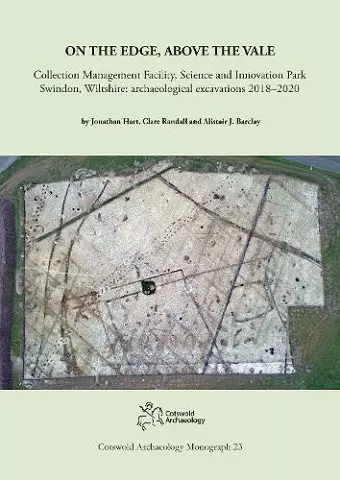On the Edge, Above the Vale
Collection Management Facility, Science and Innovation Park, Swindon, Wiltshire: archaeological excavations 2018–2020
Jonathan Hart author Clare Randall author Alistair J Barclay author
Format:Paperback
Publisher:Cotswold Archaeology
Published:13th Mar '25
Should be back in stock very soon

Archaeological investigations by Cotswold Archaeology on behalf of the Science Museum Group ahead of the construction of the Collection Management Facility, Science and Innovation Park at the former site of RAF Wroughton, a Royal Airforce airfield that opened in 1940, produced evidence for a double pit alignment, an open settlement of Iron Age date, and a series of Roman enclosures and a small Late Roman cemetery. The site lies on a raised chalkland plateau, part of the North Wessex Downs, and overlooks Swindon, the Thames Valley and the Cotswolds to the north with the higher chalk downs, the Ridgeway and Barbury Castle just to the south. The earliest evidence for human activity included an isolated Beaker pit and a small number of worked flints of Neolithic and Bronze Age date. However, the first substantial evidence for activity on the plateau was a pair of converging pit alignments that crossed the north western part of the site. This arrangement may have been designed to funnel people and animals up onto the chalk plateau. The more eastern alignment may have acted, at least initially, as a boundary to an otherwise extensive open settlement made up of roundhouses and pits that was only partially revealed by the excavation. The pit alignments are very poorly dated but their spatial location with the settlement of Iron Age date indicates they are certainly of preIron Age or earliest Iron Age date. The Iron Age settlement was made up of at least 11 roundhouses, a Cshaped ditched enclosure, over 150 pits, and a series of inhumation burials some of which were made in flat graves and others that were made within pits and more rarely a ditch. All the prehistoric burials were radiocarbon dated, which indicated that burial took place during the Early to Middle Iron Age. Some of the earliest burials appeared to have been bound and therefore possibly stored prior to burial within the settlement – suggesting that they were already old and had died sometime before the foundation of the settlement. In addition, to the occurrence of the presence of human remains some of the pits contained more unusual deposits, combinations of material, charcoal or burned deposits, notable dumps of chalk or sarsen. Amongst the material from the pits...
ISBN: 9781917215022
Dimensions: unknown
Weight: unknown
224 pages